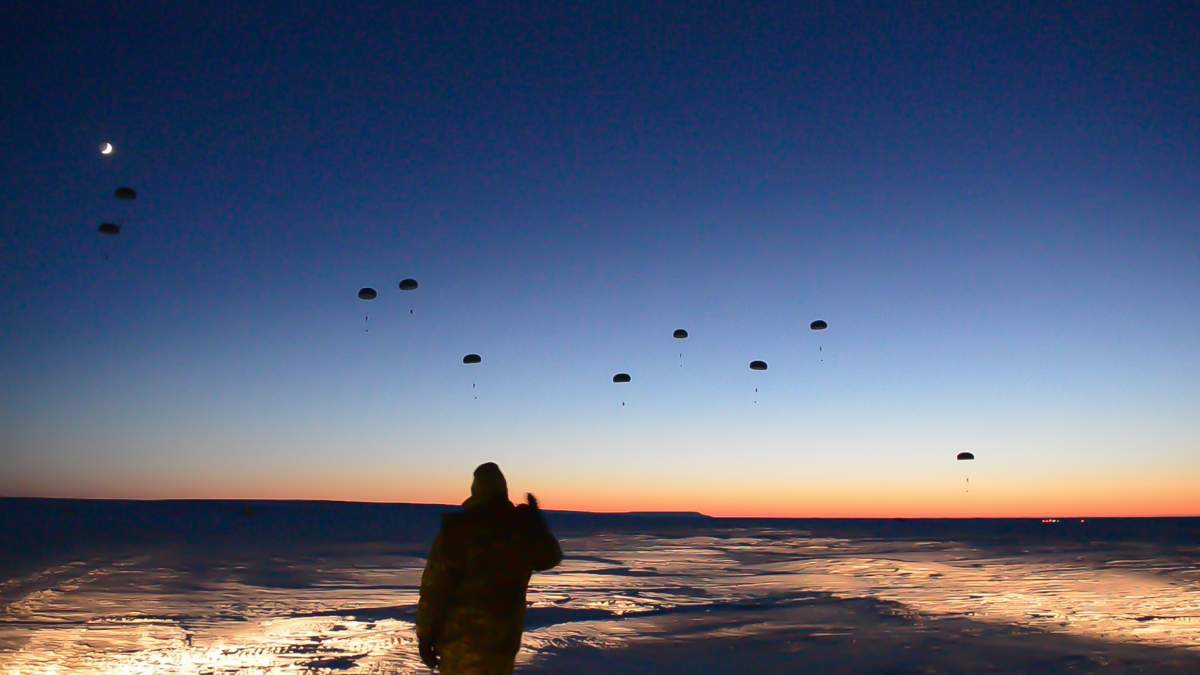The Department of National Defence is gearing up for an extensive overhaul of its Arctic monitoring systems as the ice melts and world powers turn their attention north.

An announcement went out last week to inform private suppliers of something the department is calling the All Domain Situational Awareness Science & Technology Program (or ADSA).
DND says it will spend up to $133 million on ADSA over the next five years to begin developing ways to improve the military’s “awareness of air, maritime surface and sub-surface approaches to Canada, and in particular those in the Arctic.”
According to the government documents, the current system used to monitor Canada’s northernmost fringes — which encompass 75 per cent of the country’s coastal territory — will need a total revamp as early as 2025.
“Climate change is making the North more accessible, thereby increasing economic activity and international interest in the Arctic,” the announcement notes. “Such increased Arctic activity brings additional responsibilities for the Department of National Defence.”
Rob Huebert, associate director of the Centre for Military and Strategic Studies at the University of Calgary, says he’s glad to see some coordinated movement toward upgrading the existing surveillance network, elements of which are now decades old.
“The immediate reaction is ‘it’s about time,'” Huebert said.
Aiming for 2025 is probably not fast enough, he noted, considering the pace of climate change and the insatiable thirst for the Arctic’s vast energy and mineral resources.
The Russians are just one of several international players already positioning themselves in the region, Huebert explained. The Chinese have made no secret of the fact that they are moving into northern waters, sending a naval task force up toward the Aleutian Islands last year. Meanwhile, as concern surrounding possible missile launches from North Korea mounts, the Americans have placed the majority of their mid-level interceptors in Alaska.
WATCH: Russian military activity increasing in the Arctic
Huebert predicted, however, that Ottawa will proceed at a snail’s pace until something happens to jolt the government into quicker action.
“I suspect that the next time the Russians do something really dangerous in the region … then all of this gets sped up substantially.”

Get breaking National news
In his ministerial mandate letter to Defence Minister Harjit Sajjan, the prime minister instructed Sajjan to “renew Canada’s focus on surveillance and control of Canadian territory and approaches, particularly our Arctic regions.”
READ MORE: Arctic sea ice at record winter low for second year in a row
The current North Warning System provides early warnings of incursions into Canadian airspace, but it’s over 30 years old, dating back to the mid-1980s. Radar-based satellite systems are also used to monitor the region from space.
According to Huebert, the Harper government was heavily focused on Canada’s Arctic sovereignty, but played its cards close to the chest. It’s difficult to know if the new Liberal government is truly starting from scratch, he said, or if significant upgrades have already happened.
“A lot of the stuff that the air force was doing, a lot of the stuff that (Defence Research and Development Canada) was doing for sensors and the rest, is simply not well known.”
Watching the ocean floor
The defence department’s mention of detecting “sub-surface” approaches to Canada is a direct reference to submarines, noted Huebert, which would be a significant improvement to our existing sensor network.
At the moment, one of the only ways to know if someone has positioned a sub at Canada’s frozen back door is to receive a report from an Canadian Ranger or scientist of the top of a submarine breaking the water. At that point, the Royal Canadian Air Force will deploy an Aurora surveillance aircraft to investigate further, said Huebert.
READ MORE: Cold War II? Russian military plans buildup from West to Pacific
A sub-surface detection system would make securing the waters far less complicated, which is important given the deployment of Russia’s advanced “Borei-class” submarine fleet.
“The one question I’m getting very interested in is, are the Chinese going to start giving some of their submarines under-ice capability?” Huebert added.

Drones in the Arctic skies?
Ottawa is also looking to begin using surveillance drones in the skies over the Arctic. A recent call for tender from Transport Canada asked for a private company to supply at least one unmanned aerial system (or drone) to help look for environmental problems, keep tabs on shifting sea ice and boost Canadian sovereignty over northern waters.
“Transport Canada is considering the use of a (drone) to enhance the safety and security surveillance capability of its National Aerial Surveillance Program to survey ice and oil spills in the Canadian Arctic,” confirmed a department spokeswoman in an email to the Canadian Press.
Canada’s Chief of the Defence Staff, General Jonathan Vance, has been open about the fact that his department is also looking to make use of armed drones.
There will certainly be technical issues to overcome if those drones are deployed in the far North. Arctic weather can be extreme, and satellite connections for GPS are not always the most reliable at high latitudes. Spending half the year in darkness also means greater reliance on radar for drones, said Huebert, but once these challenges can be overcome, the technology could be extremely useful.
“What you really need them for is a layered approach. Drones can go out in conditions and in places where it would simply be too cost-prohibitive to have aircraft. They give you an extra set of eyes.”
With files from the Canadian Press.








Comments